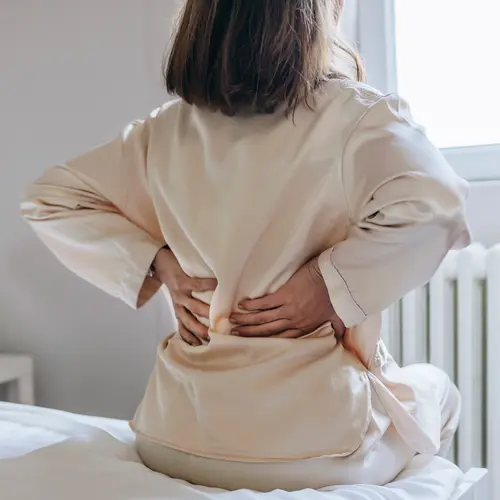You've got a few key treatment goals when you have a compression fracture of the spine. You want to ease the pain, heal the fracture, and treat the osteoporosis that weakened your bones and caused them to collapse.
There's a good chance you won't need surgery. Most people can get by without it. Compression fractures usually heal on their own in about 3 months. While that happens, your doctor may suggest you try some things at home that can make you feel better, such as pain medicines, rest, physical therapy, or a back brace.
Pain Medicine
You can often get relief with an over-the-counter drug like acetaminophen or ibuprofen. Check with your doctor to see which one is right for you. Your doctor might prescribe a stronger medicine for more intense or persistent pain.
The doctor might also suggest you take the hormone calcitonin. Studies show it can help ease the pain from compression fractures.
Rest
You don't want to overdo it with activity, but you also don't want to stop moving entirely. Lying around for too long can weaken your bones even more. Your doctor might recommend bed rest for a short period of time. After several days or as soon as you start to feel better, gradually ease back into your old routine.
For a few weeks or months, you may still need to avoid heavy exercise that could make your injury worse. Ask your doctor when it's safe for you to get active again and what the best ways to get moving are.
Physical Therapy
Once you're feeling better, ask your doctor if you should join a rehab program or work with a physical therapist. Exercises that strengthen your back can help you avoid having more compression fractures.
Check with your doctor about the best weight-bearing exercises for you, such as:
- Walking
- Yoga
- Dancing
They're all good for strengthening bones. Or try tai chi, which improves balance and helps prevent falls that lead to fractures.
Bracing
Wearing a back brace when you have a spinal compression fracture is similar to wearing a cast when you have a broken arm. It's made of a rigid frame that takes pressure off the painful bone and limits your movement. It gives your injured vertebrae -- the small bones that make up your spinal column -- time to heal.
There isn't much research to prove that a brace helps heal compression fractures, but one study shows it can ease pain.
Prevent Further Fractures
In the short term, treatments like pain medicines, physical therapy, and bracing might help ease your pain and get you moving again. But you also want to lower your odds of getting more broken bones. Some drugs can help.
Bisphosphonates. This type of medicine can prevent more bone loss and reduce fracture risk. Some examples include:
Your doctor may suggest other medicines, such as:
SERMs. These may help prevent bone loss if you’ve gone through menopause. Some examples are raloxifene (Evista) and tamoxifen.
Denosumab (Prolia). Your doctor may recommend it if you’ve been through menopause. You get it as an injection under your skin every 6 months.
Romosozumab (Evenity). This drug increases bone formation and decreases bone breakdown. One dose of romosozumab consists of two injections, one immediately following the other, given once a month by a health care professional. Twelve doses in total are recommended.
Parathyroid hormone (Forteo, Tymlos). This helps you form new bone. It's for men and postmenopausal women with severe osteoporosis. You inject it every day for up to 2 years.

